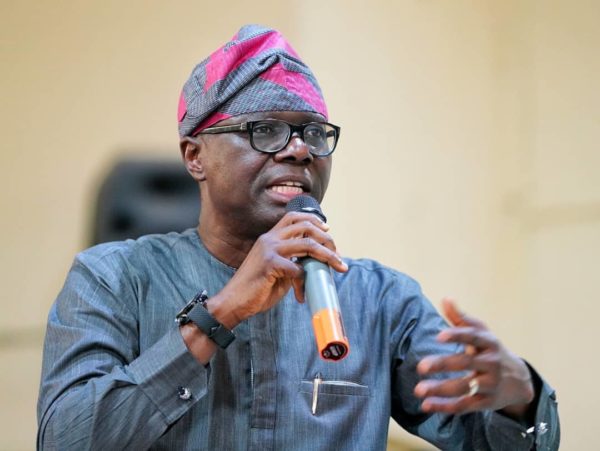By Ebun-Olu Adegboruwa, SAN
There are several historical versions of the true LAGOS, but one recurring one is that it is claimed by itinerant traders called the Aworis, who have today become the Olofins, the present land-owning families in Lagos State. Given its unique cosmopolitan location, Lagos became an instant attraction for the British merchants, as the easy route to boost their slave trade and other commercial activities. So it was that Lagos became the centre of governance, for the colonialists. Being the primary place of residence and governance, Lagos was modeled to suit the lifestyles of the British conquerors, with proper physical planning and infrastructures, such that would later lead to the emergence of city centres like Apapa GRA, Ikeja GRA, Old Yaba/Railway Units, Ikoyi and other exclusive areas.
Landmark buildings and estates sprang up also in Lagos, which easily became the unanimous choice as federal capital, upon Nigeria’s independence. With suitable infrastructure and government presence, Lagos became the commercial hub for all manner of business investments, trading and commerce, despite its limited land size. It then acquired some kind of cosmopolitan status, with people trooping in from all nooks and crannies of the nation, for greener pastures. The presence of several military barracks and police formations also ensured that it was about the safest city to dwell in, promoting a sense of acceptability, for all. And the people! The average Lagosian is a happy go lucky fellow, satisfied with the goodness that life can bring, detribalized, urbane, hospitable, liberal minded and tolerant, without any religious or tribal biases at all. They are simply the best.
Upon the attainment of independence, Ibadan was adopted as the political capital of the Yorubas, thus saving Lagos the bitter political wars, rancours and schemes, even though the mainstream politics of the Unity Party of Nigeria worked to favour the development of Lagos, eventually. Obafemi Awolowo developed a master plan for Lagos through Lateef Jakande, that was rooted in people-oriented governance through mass housing, transportation, building of schools for free education and enduring road networks. Successive administrators of Lagos have in turn imbibed the culture of development through planning, even among the non-career administrators, like Ndubuisi Kanu and Buba Marwa. By the time the federal government realized the need to expand its operations through a new capital city, Lagos had acquired and retained its pride of place as the commercial nerve centre of the nation, which you have no choice but to reckon with as such. This was the scenario leading to the 1999 general elections, which threw up Bola Tinubu.
Bola Tinubu undertook a thorough assessment of the status of Lagos, consulted widely and decided on a new masterplan. He assembled a team of professionals and experts, from all over Nigeria, to help develop the vision into an achievable template. It would later take some of his trusted allies to several cities abroad, to understudy their models for good governance and development. The gain of that exercise was in the realization that development could not be easily attained through the existing bureaucracy, leading to the establishment of several interventionist agencies like LASTMA, LASEPA, LAGBUS, LASEMA, LABSCA, etc. The Tinubu era was mainly to lay the foundation for the new Lagos, for which he co-opted experienced technocrats, most of whom were not indigenes of the State, to help run with his vision. It was a daring vision indeed, that challenged the status quo and got the powers that be thundering down on it with all aggression, all of which it survived, albeit not without some bruises here and there. Having laid the political foundation, Babatunde Fashola would later come in to hammer in the real mega city agenda. With his intellectual gift, exposure and skills, Fashola worked tirelessly to oil the wheel of Lagos’ transformation, embarking upon very laudable projects to reach the people. Though elitist in style, Fashola’s concept of good governance got other States running and Lagos soon became a model for planning and development. He brought sanity into governance, majoring mainly on projects and manpower development. Virtually from nowhere, Akinwunmi Ambode walked into the scene, with bold developmental ideas through sensible initiatives, which challenged all previous efforts. His seeming political naivety was his undoing though, as he got swallowed by the same Lagos agenda that he came to expand. The 2019 election threw up Babajide Sanwoolu, to spearhead the next phase of the Lagos Model.
From whichever angle it is viewed, the Lagos Model has worked for Lagos and for Nigeria, being the product of careful and deliberate planning, over the years. It would definitely take a counter superior model, to displace that status quo. And that other model must be known, it must be specific and speak to the real issues that have troubled or caged the original model. Those issues range from perceived godfather-rism, the much-trumpeted greed and total dominance of the political and economic space of Lagos, by a dynasty. Now, it is possible to be disenchanted by the turn of events since the Tinubu era, but we can’t possibly wish away the positive impact of the Lagos Model, first on the people and secondly on governance, across Nigeria, for it has become a phenomenon.
For the first time in Nigeria, we actually had an Attorney-General that was spearheading integrity as a policy for running public institutions. Yemi Osinbajo was the arrowhead of the transformation of the judiciary in Lagos State, through revolutionary initiatives of electronic recordings, upgrade of welfare of judicial officers, commencement of alternative dispute mechanisms and renovation of the courtrooms. It is true that many have issues with the elitist nature of the Lagos Model, as no single slum settlement has so far benefitted from this arrested development through self enrichment, despite huge monetary investments from donor agencies such as the World Bank and AFDB. This should be the next phase of the governing think tank, to integrate the rural settlements into the developmental plan of the mega city.
The Lagos Model has been hindered by the shortsightedness of lack of electricity to drive the economy of Lagos. If there is any regret for Fashola, it should be his inability to develop an off-grid power system for Lagos. That in itself partially crippled all the efforts put into the Lagos Model. How can a city with so much potential be dependent on public power supply, when it was revealed at the mega city planning stage that extant bureaucratic institutions should be sidelined for revolutionary initiatives? That indeed is arrested development! If there can be at least eighteen hours of constant electricity supply in Lagos, then you can be sure that in five years from now, its economy will be competing with that of Nigeria. The consequences of the power drought, on the environment, on productivity and the prosperity of Lagosians are too weighty to be ignored. Added to this is that Lagos is a city without potable water! How can this be? In this century of phenomenal developments?
“Lagos is the new rotten apple. Glittery outside. Rotten and broken inside. A mega city running on generators, prosthetics and the mercies of oligarchs and cabals. A city of glittering skyscrapers. Yet, all the major skyscrapers on Broad Street and Marina have been abandoned and turned into warehouses, because many cannot climb the numerous flights of stairs. Over five million naira diesel is needed daily to power a skyscraper on the Marina and Broad Street!!! A sepulchral investment. Welcome to Lagos, a dead city of concrete jungle and the financial quicksand of Nigeria.” (Courtesy, Jefferson Uwoghiren on Facebook).
The burden on Sanwo-Olu is very huge and it will take a miracle to discharge them effectively. I see a governor who wants to work with and for the people but is tied if not crippled, I see a leader who wants to please the people and at the same time dine with the cabal oppressing and milking the people. The baggage will not just disappear suddenly, with all the trappings of 2023. It should not have been so difficult to canvas support for the governor for his re-election given all the odds but there has to be a radical departure from the status quo. The people must take their pride of place in the governance equation. We cannot run a proxy administration forever, there has to be a change, somehow, somewhere. The challenge now confronting Sanwo-Olu is to return to the drawing board and dig out the original masterplan for the Lagos Model, to free it from all the cobwebs and an apparent tactical misadventure. The seeming distrust for the Lagos Model is based mostly on the disconnect between the people and the drivers of the masterplan. A situation that seems to prosper and oil the pockets of a dynasty cannot survive the 21st century transparency agenda for long. The architects of Lagos of old did no special thing but to focus on infrastructure and the deliverables. There is just no way a city like Lagos can continue to exist without basic amenities of water, electricity, durable roads and housing, for the common people, who are in the majority. That should be the essence of the new phase, to be anchored by Babajide Sanwoolu from 2023 and beyond. So, if the Lagos Model must continue, it must work for the common good. We cannot have a Mega City held down by touts, thugs and cultists. It just cannot work.
Dear readers, we really need your support to keep on serving you with authoritative, truthful, and juicy stories everyday. For your support, please reach out to the editor @gavelinternational66@gmail.com

